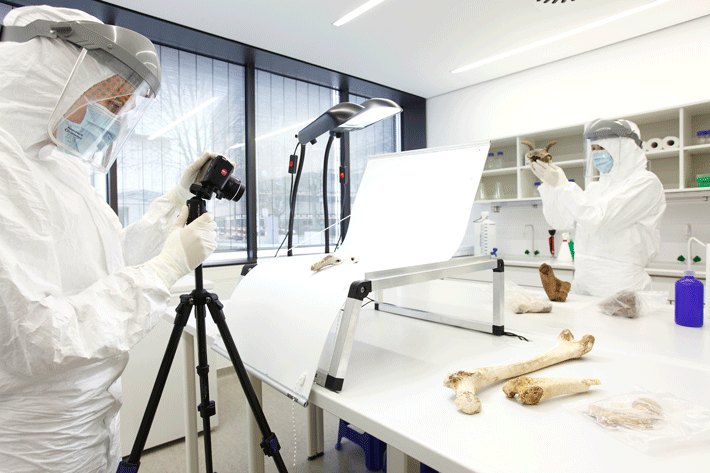Central Europe’s Prehistoric Populations

(Thomas Hartmann/University of Mainz)
MAINZ, GERMANY--Using more than 350 samples of mitochondrial DNA from prehistoric human bones and teeth found in Germany, an international team of scientists has reconstructed the first detailed genetic history of modern-day Europeans. The samples spanned a period of 4,000 years, from the earliest farmers to the early Bronze Age. “What is intriguing is that the genetic signals can be directly compared with the changes in material culture seen in the archaeological record,” said Kurt Alt of the University of Mainz. Hunter-gatherers were joined by early farmers from the Near East, but the genetic results show that migrations from Western and Eastern Europe also occurred. “It is fascinating to see genetic changes when certain cultures expanded vastly, [such as the Bell Beaker and the Corded Ware cultures] clearly revealing interactions across very large distances,” he added. In addition, a team led by Joachim Burger of the Institute of Anthropology at Johannes Gutenberg University, Mainz, compared the bones of early farmers and hunter-gatherers who buried their dead in Germany’s Blätterhöhle cave. They found that the two groups lived side-by-side for more than 2,000 years. The hunter-gatherers maintained a specialized diet that included fish until about 5,000 years ago. Genetic testing shows that the hunter-gatherer women sometimes married into the farming community. “Neither hunter-gatherers nor farmers can be regarded as the sole ancestors of modern-day Central Europeans. European ancestry will reflect a mixture of both populations, and the ongoing question is how and to what extent this admixture happened,” said Adam Powell of Johannes Gutenberg University.
No hay comentarios:
Publicar un comentario